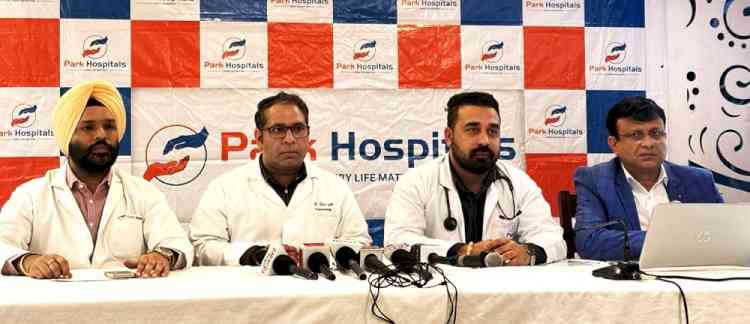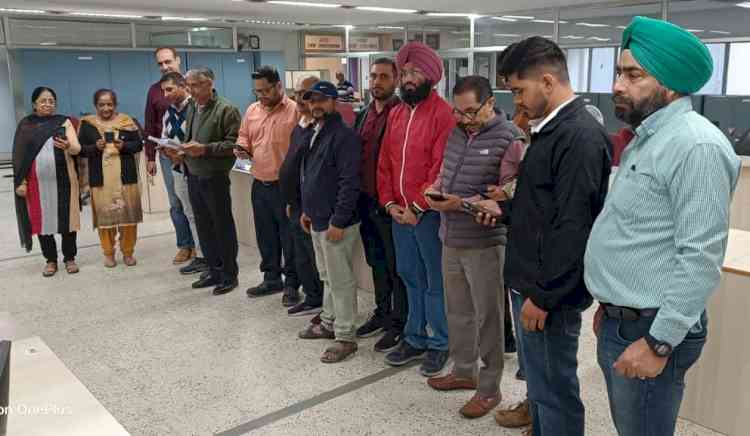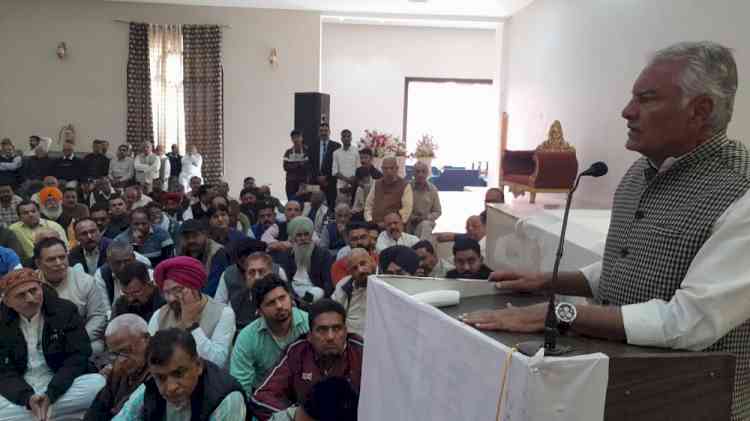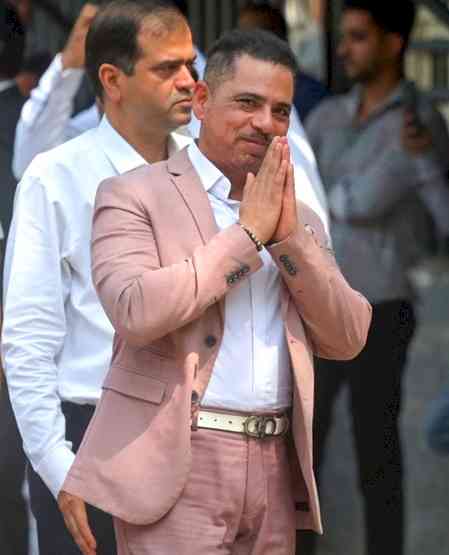India needs national COPD prevention, control program: Dr Gursewak Singh
A team of doctors from PARK Hospital, Mohali including Dr Hitesh Gaur, consultant pulmonology, Dr Kshitiz Vashista consultant internal medicine, Dr Gursewak Singh consultant internal medicine & Dr Abhishek Kumar consultant internal medicine shared valuable facts and myths about Chronic Obstructive Pulmonary diseases (COPD) during a press conference here on Tuesday.

Chandigarh: A team of doctors from PARK Hospital, Mohali including Dr Hitesh Gaur, consultant pulmonology, Dr Kshitiz Vashista consultant internal medicine, Dr Gursewak Singh consultant internal medicine & Dr Abhishek Kumar consultant internal medicine shared valuable facts and myths about Chronic Obstructive Pulmonary diseases (COPD) during a press conference here on Tuesday.
PARK Hospitals is North India’s biggest super specialty hospital network with 19 hospitals, 3500 beds, 800 ICU beds, 14 cath labs, 45 modular OTs and over 1000 doctors.
Dr. Hitesh Gaur said, “COPD is 3rd largest killer after heart problems & cancer worldwide. Many people mistake their increased breathlessness and coughing as a normal part of aging. In the early stages of the disease, one may not notice the symptoms,”
Dr. Gaur further said that COPD can develop for years without noticeable shortness of breath.
“You begin to see the symptoms in the more developed stages of the disease. COPD is a progressive form of lung disease ranging from mild to severe. It is characterized by a restriction of airflow into and out of the lungs that makes breathing difficult,” Dr Gaur informed.
Dr Kshitiz Vashista said that COPD affects nearly 63 million people in India, which is about 32 % of the world's COPD population.
“COPD causes more deaths than AIDS, TB, malaria & diabetes all put together. COPD most often occurs in people 40 years of age and older who have a history of smoking. These may be individuals who are current or former smokers. COPD prevalence is around 5.5 to 7.55% in Indian. Recent studies suggest the prevalence rate of COPD in males is as high as 22% in men and 19% in females.” Informed Dr. Vashista.
According to Dr Gursewak Singh, there is no permanent cure for COPD, but treatment options are available to prevent more damage and improve quality of life.
Dr Abhisekh Kumar said that India’s COPD death rates are among World’s highest with 98 per 1 lakh of population, which is three times the American rate of 33 deaths per 1 lakh of population.
Dr. Gaur said that early screening can identify COPD before major loss of lung function occurs.
“Most cases of COPD are caused by inhaling pollutants; that includes smoking and second-hand smoke. Main risk factors of COPD, which is smoking, accounts for 46 % of cases, followed by Outdoor & Indoor pollution which account for 21% COPD cases and occupation exposure to gases and Fumes account for 16 % cases of COPD. Genetics can also play a role in an individual’s development of COPD—even if the person has never smoked or has ever been exposed to strong lung irritants in the workplace.” Dr. Gaur concluded.
COPD risk factors:
· A history of childhood respiratory infections
· Smoke exposure from coal or wood burning stove
· Exposure to second-hand smoke
· People with a history of asthma
· People who have underdeveloped lungs
· Those who are 40 and older as lung function declines as you age.
Signs and symptoms of COPD:
· Chest tightness
· Chronic cough that may produce clear, white, yellow or green mucus
· Frequent respiratory infections
· Lack of energy
· Unintended weight loss
· Shortness of breath
· Swelling in the ankles, feet or legs
· Wheezing


 City Air News
City Air News 










